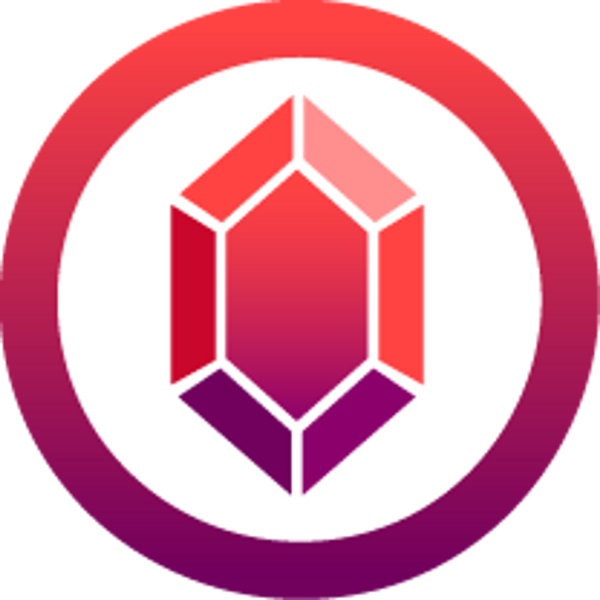With the Bellatrix upgrade complete, the most hotly-anticipated event in this year's crypto calendar is now under way.
The Merge sees the Ethereum blockchain transition from proof-of-work to proof-of-stake consensus, marking a major milestone for Ethereum Upgrades (previously known as Ethereum 2.0).
The Merge is an exciting development that paves the way for future improvements, but it does not in itself increase Ethereum's capacity. Even when further upgrades do address scalability, there are reasons why "Layer 1.5" solutions like SKALE will always offer advantages—especially for platforms like Ruby.
Ethereum Upgrades: What Is The Merge?
Ethereum Upgrades, also known as Serenity, is an ambitious series of improvements designed to enhance the scalability, security, and environmental sustainability of the Ethereum network—ultimately enabling the blockchain to process tens of thousands of transactions per second, cheaply and quickly, while reducing its vulnerability to attack and decreasing its energy usage.
After years of planning and research, the Beacon Chain—Phase 0 of Ethereum Upgrades—was launched on December 1, 2020. The Beacon Chain is the proof-of-stake blockchain that will serve as the future consensus layer for the network, and that will eventually coordinate many different shards, or sub-chains. At launch, it did not offer any of the functionality that the existing Ethereum mainnet—the execution layer—does.

The Paris upgrade, which will likely occur early Thursday morning, UTC time, will see Ethereum mainnet merged with the Beacon Chain, ending the platform's proof-of-work era. Following the Merge, all transactions will be validated on the proof-of-stake chain. This will reduce Ethereum's energy consumption by around 99.95%, as well as enabling future upgrades.
Ethereum users should be unaffected by the Merge. All dApps should continue to operate as before, with no action necessary. Some exchanges may pause ETH and ERC20 deposits and withdrawals for a period of time around the Merge as a precautionary measure.
There is no separate ETH2 token. "ETH2" is a ticker symbol used by some exchanges to represent ETH that has previously been staked to secure the Beacon Chain, ahead of the Merge. If you receive a message stating that you need to take any action to convert your ETH to ETH2, this is a scam.
Serenity
Ethereum's current capacity is around 15 transactions per second (tps). The ultimate goal of the multi-phase roll-out of Serenity is to increase the network's scalability to a point where it can support tens of thousands of transactions per second and compete with TradFi systems, while maintaining security and decentralization.
The Merge itself will not impact the network's capacity, meaning that high gas fees and delays will still be a problem for Ethereum users. The long-term solution for scalability is sharding, with the Beacon Chain initially expected to co-ordinate activity between 64 shards.
However, sharding will likely not be introduced until 2024, and sharding alone will not increase throughput to the desired level. There also remain questions about how shards will be implemented, including whether they should execute code themselves or simply store data. In the meantime, Layer 2 solutions, including roll-ups, will raise capacity to hundreds or thousands of transactions per second.
The Europa Chain And Ethereum 2.0
SKALE has taken a "Layer 1.5" approach, leveraging a combination of Layer 2 functionality and Layer 1 security. It is built on Ethereum and connected to Ethereum, and can support an unlimited number of SKALE chains, but exists separately and with dedicated nodes in the SKALE network.
SKALE's strategy for adding users has been to circumvent the need for lower gas fees by adopting a business model that eliminates them altogether. Rather than keeping per-transaction fees, dApp chain owners pay gas costs through chain subscriptions, which can in turn be covered in whatever way chain owners want.
As Stan Kladko, SKALE's CTO, explains in the video on Rollups vs SKALE below, this is similar to the Web2 user experience, and is therefore far more familiar to regular users.
Additionally, SKALE provides functionality such as on-chain storage that even the fully-upgraded Ethereum network will not. Building Ruby on the Europa SKALE Chain therefore offers DeFi users specific benefits, which will complement those provided by the upgrades to Ethereum mainnet.
An Ethereum-Centric Future
The Ethereum Foundation describes the Merge as "the most significant upgrade in the history of Ethereum". With the improvements that will be built on the merged PoS chain, and the existing technologies like SKALE already adding capacity to the network, Ethereum is in a strong position to add users and market share over the coming years. Ruby expects to be one of the beneficiaries of this trend, along with the rest of the SKALEVERSE, as DeFi services move into the mainstream.
Follow Ruby on Twitter and Telegram, and subscribe to our blog for regular updates.






